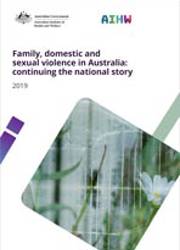ABS Recorded Crime – Victims, Australia (RCV), 2017
First year: 1993
Latest year: 2017
Frequency: Yearly
Year in this publication: 2017
Methodology: Administrative dataset
Geography: National, state/territory
Purpose/description
ABS Recorded Crime – Victims, presents statistics about victims of selected offences that came to the attention of, and were recorded by police during a 12-month reference period. Selected characteristics about the victim (including sex and age) or incident (including weapon use and location) are also presented, as well as the outcome of the police investigation at 30 days from the time of report. Information about the relationship of the offender to the victim and the Aboriginal and Torres Strait Islander status of the victim is also presented for selected states and territories.
Scope and coverage
Recorded Crime – Victims presents information about victims of a selected range of offences. Statistics in this publication relate to both completed and attempted offences, i.e. those where the intent is not fulfilled. Attempts to commit an offence are classified to the same ANZSOC divisions and/or subdivisions as completed offences, with the exception of:
- Murder, where murder and attempted murder are distinguished as separate offence categories
- Attempted motor vehicle thefts due to difficulties in distinguishing these offences from criminal damage
The scope excludes the following:
- Conspiracy offences
- Threats to commit an offence (An exception to this exclusion is assault where there is an apprehension that the direct threat of force, injury, or violence could be enacted, which is in-scope of the collection. This also applies to offences like robbery, kidnapping/abduction and blackmail/extortion where an element of threat is implicit in the nature of the crime)
- Aid, abet and accessory offences
- Deprivation of liberty offences
Victims of crime as recorded by the Australian Federal Police (AFP) are out of scope of this publication. As such, victims of crime in Australia’s ‘other territories’ such as Christmas Island, the Cocos (Keeling) Islands and Jervis Bay Territory are out of scope as these territories are under AFP jurisdiction.
Due to quality and/or comparability issues, or an inability to supply data to the ABS, the statistics presented in this collection exclude the following:
- assault data for victims in Victoria and Queensland
- Indigenous status data for victims in Victoria, Western Australia, Tasmania and the Australian Capital Territory
- relationship of offender to victim data in Western Australia.
Victims of Family and Domestic Violence (FDV) related offences presents statistics about victims of selected offences where the relationship of offender to victim, as stored on police systems, falls within a specified family or domestic relationship, or where an FDV flag has been recorded, following a police investigation. National statistics are available for selected offences only. Family and domestic violence data for selected states and territories are available for 2014–2017 reference periods.
FDSV definitions
Victims of family and domestic violence related offences are identified where the relationship of offender to victim falls within a specified family or domestic relationship. Victims of family and domestic violence can also be identified where an FDV flag has been recorded following a police investigation. Offences that can be identified as FDV–related include: murder, attempted murder, manslaughter, assault, sexual assault, kidnapping and abduction.
For more information, visit Recorded Crime – Victims, 2017, cat. no. 4510.0.



